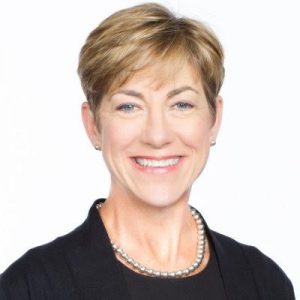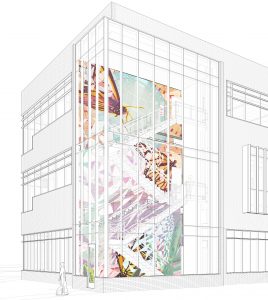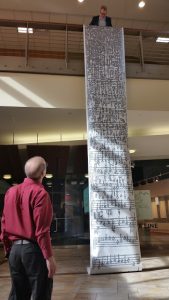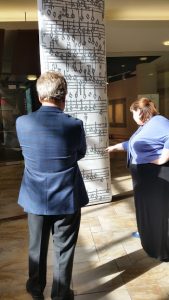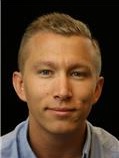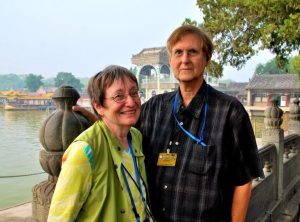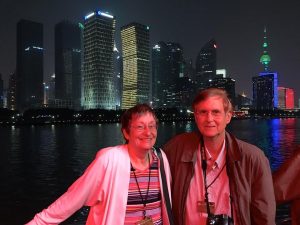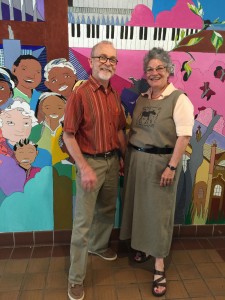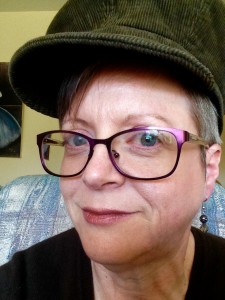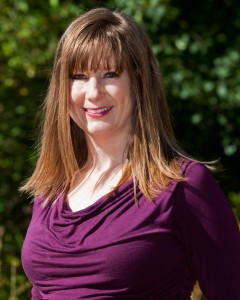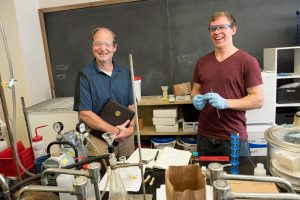
It makes perfect sense that Terry Lindstrom ’73 and his wife Janet look forward to funding Undergraduate Research and Graduate Opportunity (URGO) Summer Research students for the next three years, just as they have since 2013. Lindstrom found his passion while doing undergrad research at Augsburg, and he wants to make sure others have the opportunity that meant so much to him.
“Everyone deserves a passionate career,” says Lindstrom, who in 2010 retired his post as Distinguished Research Fellow at Eli Lilly and Company, Indianapolis, where he spent 31 years doing drug discovery and development.
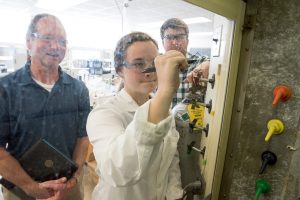 Like many young Auggies, he had no obvious career path in mind when he first ventured onto the Augsburg campus. He thought he might like to major in science, and Augsburg had a good science department. But would he choose biology? Chemistry? Physics? He wasn’t sure. He was sure of one thing: chemistry was a challenge.
Like many young Auggies, he had no obvious career path in mind when he first ventured onto the Augsburg campus. He thought he might like to major in science, and Augsburg had a good science department. But would he choose biology? Chemistry? Physics? He wasn’t sure. He was sure of one thing: chemistry was a challenge.
“I loved it, but it was hard,” he says. “Within just a few weeks, it was very clear that the chemistry professors and staff were very personable, approachable, and interested in teaching. Their willingness to help really solidified its appeal for me, although it was still difficult.” By the time he was a senior, he was also doing biochemistry research, isolating a virus in fruit flies, studying the intersection of biology and chemistry in living systems.
Bingo.
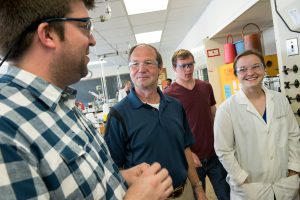 “After that, my career was a foregone conclusion. I was fascinated by biochemistry,” says Lindstrom. He was also intrigued by the teaching methods of his chemistry professor, Courtland Agre, who never gave him a straight answer, thus prompting him to find his own. “He’d always push back with another question, an orienting question. It was very frustrating at first, but he was teaching me to think critically. He’d draw it out of you, and you gained confidence. It made an indelible mark on me.”
“After that, my career was a foregone conclusion. I was fascinated by biochemistry,” says Lindstrom. He was also intrigued by the teaching methods of his chemistry professor, Courtland Agre, who never gave him a straight answer, thus prompting him to find his own. “He’d always push back with another question, an orienting question. It was very frustrating at first, but he was teaching me to think critically. He’d draw it out of you, and you gained confidence. It made an indelible mark on me.”
As much as he loved the sheer fun of learning science, he also realized he wanted to find real-world applications to benefit society. After earning his PhD in pharmacology and biochemistry at the University of Minnesota and completing a biochemistry postdoc at Michigan State University, he joined Eli Lilly. He now holds at least six patents for life-changing drugs, including Evista, for osteoporosis, and Cymbalta, an antidepressant also used to treat bone and muscle pain.
Still enthralled by complex science, Lindstrom is retired only technically; he is busy consulting and advising in numerous capacities. He also volunteers for URGO’s summer program, giving seminars, meeting students, and collaborating with science faculty members such as Assistant Professor Michael Wentzel, Associate Professor Vivian Feng, and Assistant Professor Matt Beckman. He notes
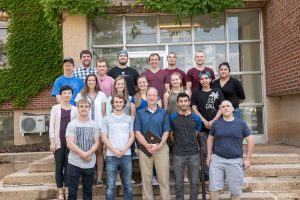
& Graduate Opportunity (URGO).
that students are working with PCR (polymerase chain reaction), a DNA synthesizing technique that made headlines not that long ago. “It was state-of-the-art only in the best molecular biology labs in the country, and now it’s actually being taught and done in Matt’s lab,” he says. “I was thrilled to see that.”
By fully endowing several students for URGO’s 10-week program, which costs $5,500 per student, he hopes that they, too, get a chance to discover their passion. “I understand how things take hold. Fundamentals are absolutely essential, but it was the research experience, free of academic book-learning, that convinced me what I wanted to do. If someone wants to test it out and see if it interests them, I’m extraordinarily happy to make that opportunity available.”
— Cathy Madison

